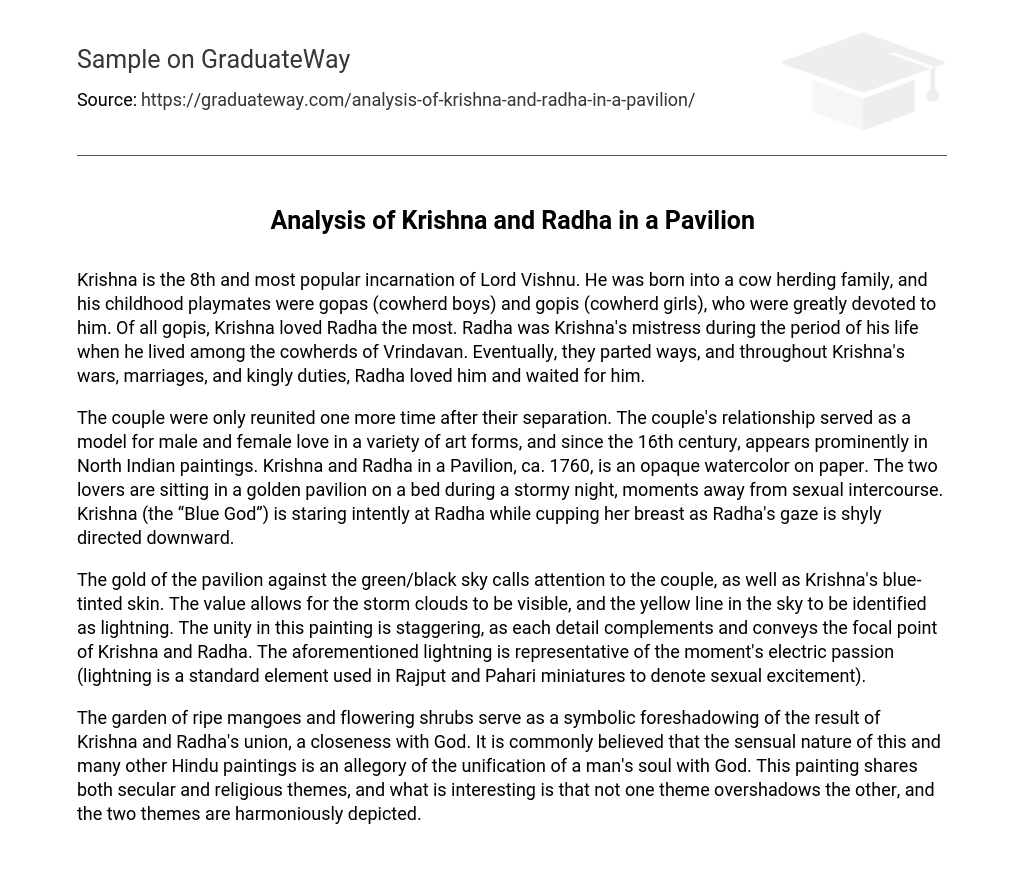Krishna is the 8th and most popular incarnation of Lord Vishnu. He was born into a cow herding family, and his childhood playmates were gopas (cowherd boys) and gopis (cowherd girls), who were greatly devoted to him. Of all gopis, Krishna loved Radha the most. Radha was Krishna’s mistress during the period of his life when he lived among the cowherds of Vrindavan. Eventually, they parted ways, and throughout Krishna’s wars, marriages, and kingly duties, Radha loved him and waited for him.
The couple were only reunited one more time after their separation. The couple’s relationship served as a model for male and female love in a variety of art forms, and since the 16th century, appears prominently in North Indian paintings. Krishna and Radha in a Pavilion, ca. 1760, is an opaque watercolor on paper. The two lovers are sitting in a golden pavilion on a bed during a stormy night, moments away from sexual intercourse. Krishna (the “Blue God”) is staring intently at Radha while cupping her breast as Radha’s gaze is shyly directed downward.
The gold of the pavilion against the green/black sky calls attention to the couple, as well as Krishna’s blue-tinted skin. The value allows for the storm clouds to be visible, and the yellow line in the sky to be identified as lightning. The unity in this painting is staggering, as each detail complements and conveys the focal point of Krishna and Radha. The aforementioned lightning is representative of the moment’s electric passion (lightning is a standard element used in Rajput and Pahari miniatures to denote sexual excitement).
The garden of ripe mangoes and flowering shrubs serve as a symbolic foreshadowing of the result of Krishna and Radha’s union, a closeness with God. It is commonly believed that the sensual nature of this and many other Hindu paintings is an allegory of the unification of a man’s soul with God. This painting shares both secular and religious themes, and what is interesting is that not one theme overshadows the other, and the two themes are harmoniously depicted.





